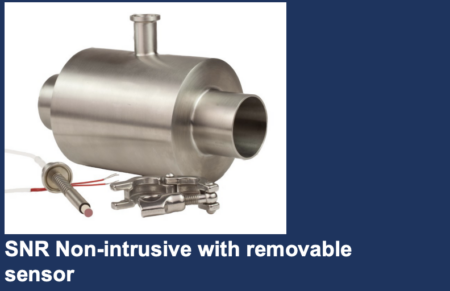Your Temperature Measurement Experts
Mini Case Studies from the Field
Small Line Temperature Measurement Solution
 Application
Application
Measuring temperature accurately in small diameter lines (less than 4” diameter) can be problematic with standard immersion style sensors. Where long term high accuracy and repeatability are required the platinum resistance thermometer (PRT) is the sensor of choice, unfortunately, standard configurations are generally not suitable for small diameter lines without some creative plumbing and many times that creates additional problems. Lines larger than 4” provide sufficient space for mounting common styles of PRT assemblies and provide an accurate measurement. One of the largest errors associated with PRTs is stem conduction and is usually caused by insufficient immersion of the sensor into the process fluid. A 1/4” diameter PRT requires about 3.5” of immersion to avoid stem conduction error. Depending on the difference between ambient temperature and the process fluid temperature the error can be several degrees.
Challenge
Most RTDs are made in 1/4” diameter and there’s only so much room inside for sensing elements and wires. Packing more stuff in an already crowded space can lead to durability and performance issues unless it’s done correctly. In addition to supporting the sensing elements, the moisture seal needs to be maintained where the 9 lead wires exit the sensor housing. All those wires do not leave much room for an effective moisture seal.
Solution
Engineers at Burns developed a packaging method for three sensing elements potted in a 1/4” diameter tube same as the original single and dual element sensors. This allows for seamless integration into existing thermowells and connection to signal conditioning equipment. The sensor package can be adapted to all the process and instrument connection styles to easily upgrade any existing temperature measurement point to three-device capability.
